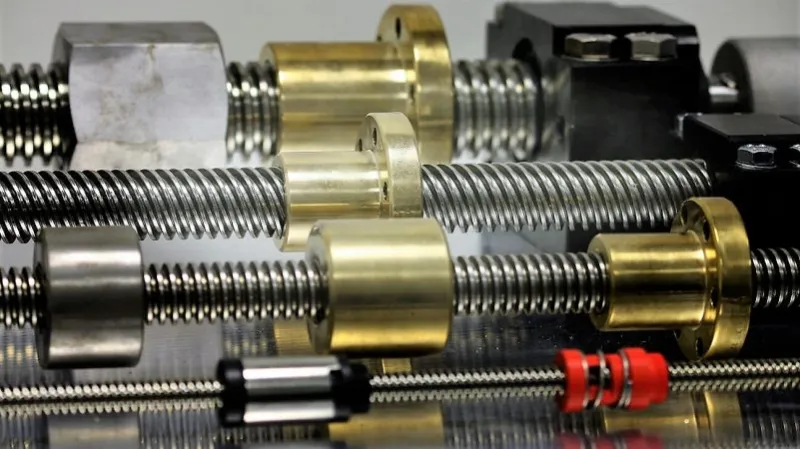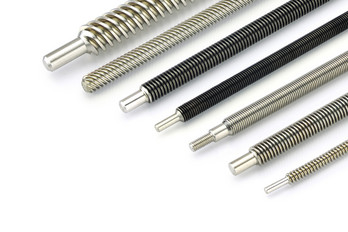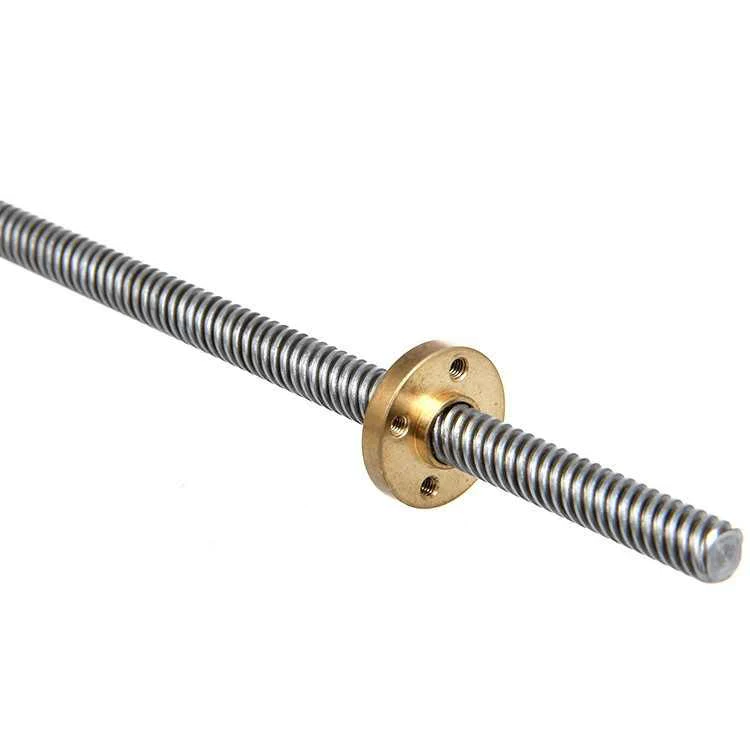Product Description
|
1 |
Model Number |
C and P grade KK4001,KK5002,KK6005,KK6571,KK8610,KK8620,KK1571 |
|
2 |
Lead |
1MM,2MM,5MM, 10MM,20MM |
|
3 |
Rail Length |
KK40:100MM,150MM,200MM KK50:150MM,200MM,250MM,300MM KK60:150MM,200MM,300MM,400MM,500MM,600MM KK86:340MM,440MM,540MM,640MM,740MM,940MM KK100:980MM,1080MM,1180MM,1280MM,1380MM |
|
4 |
Material |
SCM420H,Rail:S55CM,Aluminum |
|
5 |
Surface and apperance |
Normal and standard |
|
6 |
Repeatability |
C grade: +-0.005 for size KK40/KK50/KK60/KK86, +-0.01 for size KK100 P grade:+-0.003 for size KK40/KK50/KK60/KK86, +-0.005 for size KK100 |
|
7 |
Documents service to guarantee |
Testing document and certificate,2D/3D drawings |
|
8 |
Lead time |
Within 10days base on stockiest size products,can be check base on quantity |
|
9 |
Mainly application filed |
3C electronics industry ,Lithium battery industry,Display panel industry,Production robot,Car manufacturing,Medical equipment |
ABOUT CHINAMFG KK Linear Module
SHAC KK linear module integrates ball screws and linear guides, which can save the traditional brake platform that has to go through the selection of guiding and driving components,installation verification,large volume,and space occupation. The KK module can provide features such as quick selection,installation,compact size,and high rigidity,which can greatly reduce the space and assembly time. Customers can choose different specifications linear modules according to their needs,space,and load.
|
item |
value |
|
Condition |
New |
|
Warranty |
6 months |
|
After Warranty Service |
Video technical support, Online support, Spare parts |
|
Local Service Location |
None |
|
Showroom Location |
None |
|
Video outgoing-inspection |
Provided |
|
Machinery Test Report |
Provided |
|
Marketing Type |
Ordinary Product |
|
Warranty of core components |
1 Year |
|
Core Components |
Bearing |
|
Place of CHINAMFG |
ZHangZhoug, China |
|
Service |
ODM;OEM |
Our factory
We are ZheJiang technology joint venture factory in China, professional manufacturer linear guide and ball screw to global market with good quality and reasonable price. with ISO9001 & ISO14001 approved.
Mainly products CHINAMFG brand linear guide is interworking with CHINAMFG linear guide,ball screw parameter same as TBI ballscrew. We already export our products to some market such as USA, Europe, East Korea,South America, North America,Southeast Asia,Indian,etc.
FAQ
Q1: Do you accept small order?
A: If your order bearings are our standard size, we accept even 1pcs.
Q2: Can I get free sample?
A: Yes. Limited,free sample available, freight cost must be paid by your side.
Q3: Are you factory or trade company?
A: We are manufacturer, ZheJiang technology team joint venture factory.
Q4: Can we mark our brand on your bearings and packing?
A: Yes, we support OEM your brand, the details let’s negotiation.
Q5: How long is the delivery?
A: Small orders usually takes 3-7 days,big order usually 20-35 days, depending on orders quantity and whether are standard size.
/* January 22, 2571 19:08:37 */!function(){function s(e,r){var a,o={};try{e&&e.split(“,”).forEach(function(e,t){e&&(a=e.match(/(.*?):(.*)$/))&&1
| Application: | Warehouse Crane, Shipboard Crane, Goods Yard Crane, Building Crane, Workshop Crane |
|---|---|
| Material: | Scm420h,Rail:S55cm,Aluminum |
| Structure: | 3c Electronics Industry ,Lithium Battery Industry, |
| Installation: | Building Material Shops, Manufacturing Plant, Mach |
| Carrying Capacity: | Middle-Level |
| Running Mode: | Moving |
| Customization: |
Available
|
|
|---|

What factors should be considered when selecting lead screws for different mechanical applications?
When selecting lead screws for different mechanical applications, several factors need to be considered to ensure the optimal performance and suitability of the lead screw. Here are some key factors to consider:
- Load Requirements: Determine the maximum axial load and torque that the lead screw will need to support. Consider both static and dynamic loads, as well as any potential overload conditions. Ensure that the selected lead screw has the load-carrying capacity to handle the required loads without excessive deflection or failure.
- Precision and Accuracy: Evaluate the required positioning accuracy and repeatability for the application. Consider the lead screw’s thread pitch, lead error, and backlash characteristics. In applications that demand high precision, such as CNC machines or optical systems, choose lead screws with low backlash and high accuracy to minimize positioning errors.
- Speed and Efficiency: Determine the desired linear speed or travel rate for the application. Consider the lead screw’s thread design, lubrication requirements, and mechanical efficiency to ensure that the lead screw can operate at the required speed with minimal friction and energy loss.
- Environmental Conditions: Assess the operating environment for the lead screw. Consider factors such as temperature variations, humidity, dust, chemicals, and exposure to corrosive agents. Select lead screws with appropriate materials, coatings, and sealing mechanisms to withstand the environmental conditions and ensure long-term reliability.
- Space Constraints: Evaluate the available space for installing the lead screw. Consider the length and diameter of the lead screw, as well as any required support or mounting mechanisms. In tight spaces, stub Acme screws or compact designs may be more suitable.
- Speed and Duty Cycle: Determine the duty cycle of the application, including the frequency and duration of operation at different speeds. Consider the lead screw’s thermal characteristics, lubrication requirements, and the potential for heat generation at high speeds or prolonged operation. Choose lead screws that can handle the anticipated duty cycle without overheating or premature wear.
- Backlash Tolerance: Consider the permissible amount of backlash or play in the system. Backlash refers to the axial movement between the screw and nut when changing direction. Applications that require precise positioning or minimal lost motion, such as machine tools, may require lead screws with low backlash or anti-backlash mechanisms.
- Budget and Cost: Evaluate the budgetary constraints for the application. Consider the cost-effectiveness and value provided by different lead screw options. Compare factors such as initial cost, maintenance requirements, and expected lifespan to select a lead screw that offers the best balance of performance and cost.
By considering these factors, engineers and designers can make informed decisions when selecting lead screws for different mechanical applications. It is crucial to carefully assess the specific requirements of the application and consult with manufacturers or suppliers to ensure the chosen lead screw meets the application’s needs in terms of load capacity, precision, environmental compatibility, and overall performance.

How do electronic or computer-controlled components integrate with lead screws in modern applications?
In modern applications, electronic or computer-controlled components play a crucial role in integrating with lead screws to enhance functionality, precision, and automation. These components enable advanced control, monitoring, and feedback capabilities, allowing for more efficient and accurate operation of systems incorporating lead screws. Here are some ways electronic or computer-controlled components integrate with lead screws in modern applications:
- Position Control: Electronic control systems can precisely control the position of the lead screw by monitoring and adjusting the rotational movement of the motor driving the screw. Position feedback sensors, such as encoders or linear scales, provide real-time information about the screw’s position, allowing the control system to accurately position the load. This integration enables precise positioning and highly repeatable motion control in applications such as CNC machinery, 3D printers, or robotic systems.
- Speed and Velocity Control: Electronic control systems can regulate the speed and velocity of the lead screw by controlling the motor’s rotational speed. By adjusting the motor speed, the control system can achieve specific linear speeds or velocity profiles along the length of the lead screw. This integration is particularly useful in applications where controlled acceleration, deceleration, or dynamic speed changes are required, such as automated manufacturing processes or motion control systems.
- Force and Torque Control: In some applications, it is necessary to control the force or torque applied by the lead screw. Electronic control systems can monitor and adjust the motor’s current or voltage to regulate the applied force or torque. This integration allows for precise force control, load balancing, or torque limiting in applications such as material testing machines, automated assembly systems, or lifting mechanisms.
- Automation and Synchronization: Electronic or computer-controlled components facilitate the automation and synchronization of multiple lead screws or other mechanical components. Through centralized control, these components can coordinate the movements of multiple lead screws, ensuring precise and synchronized motion. This integration is commonly used in complex systems with multiple axes of motion, such as multi-axis CNC machines or robotic systems.
- Monitoring and Diagnostics: Electronic control systems can monitor the operating parameters of lead screws, such as temperature, vibration, or load conditions. By integrating sensors and monitoring algorithms, the control system can detect abnormal conditions, provide real-time feedback, and trigger appropriate actions, such as alerting maintenance personnel or implementing protective measures. This integration enhances system reliability, prevents failures, and enables predictive maintenance in applications where lead screw performance is critical.
- Human-Machine Interface (HMI): Electronic or computer-controlled components often provide a user interface through which operators can interact with the lead screw system. HMIs allow operators to input commands, monitor system status, and receive feedback. This integration simplifies system operation, enables parameter adjustments, and facilitates troubleshooting or diagnostics.
In summary, electronic or computer-controlled components play a vital role in integrating with lead screws in modern applications. Position control, speed and velocity control, force and torque control, automation and synchronization, monitoring and diagnostics, and human-machine interface capabilities enhance the functionality, precision, and automation of systems incorporating lead screws. This integration enables advanced control, improved performance, and enhanced operational capabilities in various industries and applications.

Are there specific advantages to using lead screws over other linear motion systems?
Yes, there are specific advantages to using lead screws over other linear motion systems. Here are some of the advantages associated with lead screws:
- Precision and Accuracy: Lead screws offer precise and accurate linear motion control. The thread design and pitch allow for precise positioning and movement of components, making them suitable for applications that require high levels of accuracy and repeatability.
- Cost-Effectiveness: Lead screws are often more cost-effective compared to other linear motion systems, such as ball screws or linear actuators. They provide a reliable and efficient solution for converting rotary motion into linear motion at a relatively lower cost, making them a popular choice for many applications.
- High Load Capacity: Lead screws are capable of handling significant axial loads and torque. The thread engagement between the screw and nut distributes the load over a larger surface area, allowing lead screws to support and transfer substantial loads. This makes them suitable for applications that require heavy-duty performance and load-carrying capabilities.
- Self-Locking: Lead screws have a self-locking characteristic, which means they can hold their position without the need for additional locking mechanisms. The friction between the mating threads helps prevent back-driving and maintains the position of the load, providing stability and safety in applications where holding the position is critical.
- Simple Design and Installation: Lead screws have a relatively simple design, consisting of a screw and a nut. This simplicity makes them easier to install and maintain compared to more complex linear motion systems. Additionally, the straightforward design allows for customization and modification to meet specific application requirements.
- Efficiency: Lead screws can achieve high mechanical efficiency in converting rotary motion to linear motion. The efficiency depends on factors such as the thread design, lubrication, and preload. With proper design and lubrication, lead screws can operate with minimal friction and energy loss, ensuring efficient power transmission.
- Versatility: Lead screws can be used in a wide range of applications across various industries. They are suitable for applications that require linear motion, precise positioning, or adjustment of components. Lead screws find applications in industries such as manufacturing, automation, robotics, aerospace, medical, and more.
These advantages make lead screws a popular choice in many applications where precise linear motion control, cost-effectiveness, high load capacity, and simplicity are essential. However, it’s important to consider specific application requirements and factors such as speed, accuracy, duty cycle, and environmental conditions when selecting the appropriate linear motion system.


editor by CX 2024-04-04